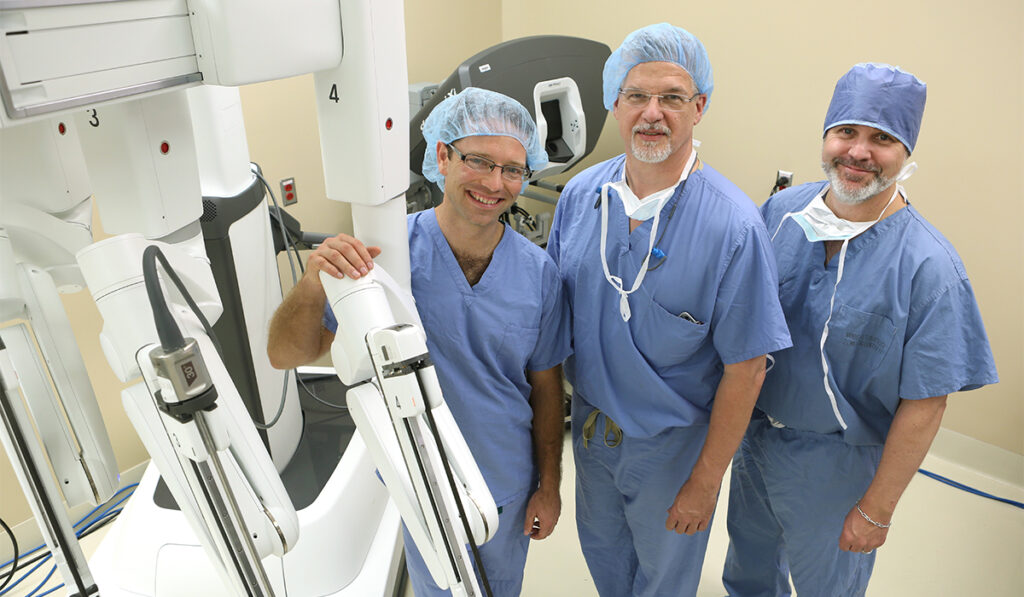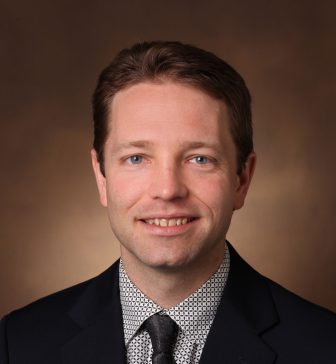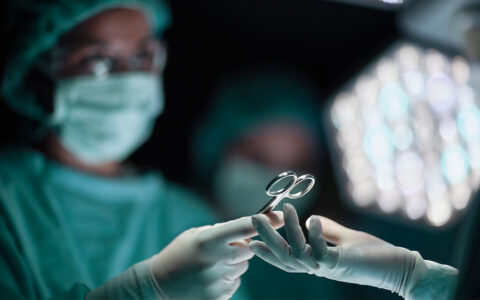Clinician scientists working in academic medicine tend to have multiple titles, and yet some are adding another: entrepreneur.
Among them are the inventors, patent holders and business owners motivated by investigational device development and their commitment to translational research in the modern healthcare market.
“I was pulled in by the idea of impact,” said Robert J. Webster III, Ph.D. “I didn’t want my work to sit on a shelf.”
Webster is the Richard A. Schroeder Professor of Mechanical Engineering at Vanderbilt University, with co-appointments in the Vanderbilt University Medical Center Department of Medicine.
“Fifteen years ago, Duke Herrell and I looked at each other and said, ‘If we don’t do this ourselves, it will never get to patients,’” said Webster, referencing his colleague, S. Duke Herrell, M.D., director of the minimally invasive urologic surgery/robotics program at VUMC. Herrell is a urologist with co-appointments at Vanderbilt University School of Engineering.
“We didn’t want to necessarily be entrepreneurs, really,” Webster added. “It was that at some point we realized that we had to be.”
Webster says that for many novel therapeutics, drugs and devices – even those with solid promise – there is a high risk of failure in the early stages of development, the so-called “valley of death” between conception of an idea and creation of a fully developed, clinically ready solution that a company can sell, and doctors can use.
“We realized, the only way to bridge that gap is with a startup,” Webster said, who knew that it’s possible for an investigator-initiated startup to provide support before an established company or investor steps up to back the project.
This realization set Webster and Harrell on a path toward creating their own business enterprise. Simultaneously, they established a home at Vanderbilt for partnerships like theirs with other leaders in surgery and engineering. That home is VISE: The Vanderbilt Institute for Surgery and Engineering.
Removing Barriers Between Disciplines
VISE’s physical space is designed to break down silos between Vanderbilt University and the medical center and allow solution-oriented scientific exploration to lead the way. Its headquarters are in a specially renovated space at VUMC, within walking distance to key areas of both campuses.
VISE operated as a virtual institute with a grassroots spirit from its founding in 2011 until 2019, when the physical space was dedicated. Today, it houses key equipment and specialty labs, including a 550-square-foot fully functional mock operating room.
Faculty, staff, post-docs and undergraduate and graduate students from several engineering disciplines and clinical specialties and subspecialties use the space to collaborate. Webster estimates about 17 engineering faculty are actively engaged and about 40 physicians are involved in a variety of projects.
“Only when you support long-term partnerships between surgeons and engineers can they develop enough understanding of each other’s worlds to really make progress,” Webster said. “The engineers watch surgeries, and the surgeons come to the engineering lab to put their hands on all the different technologies. Together, we think about ‘how could we make that better?’”
“We didn’t want to be entrepreneurs, really. It was that at some point we realized that we had to be.”
Webster and Herrell formed Virtuoso Surgical Inc. to support development of their surgical innovation. They believed the system would be far more adept at removing tumors, with additional likely surgical applications in uterine fibroids, localized prostate cancers, spine procedures, and brain cysts.
To train the robot, they will use a combination of two programming approaches: traditional model-based automation in which procedural surgical sequences are pre-programmed with start-stop conditions and machine-learning algorithms that are trained on the movements of real-life surgeons using Virtuoso to operate.
These approaches will be combined to create what Webster and Herrell hope will be robust and life-like training experience for users of their system. Webster said the goal of the three-year project is to demonstrate the device’s effectiveness through models, while the next phase will be actual, surgeon-supervised autonomous surgeries.
ARPA-H awards go to projects with the potential to transform medicine, and Webster believes Virtuoso could do just that.
“From a technical perspective, it is possible to automate actions on the system because the ‘hands’ and the ‘eyes’ of the robot are directly attached to each other and the ‘eyes’ always know where the ‘hands’ are,” Webster said. “This isn’t true of traditional robots. So, I believe it would be the perfect platform for developing the first algorithms that fully automate these type of tasks – which are at the frontier of the fields of surgery and engineering. The vision is to combine less invasive with fully automated.”
Read about another innovation that took shape at VISE in our two-part series about the work of Keith Obstein, M.D., on an advanced robotic colonoscopy system: Part 1 and Part 2.





